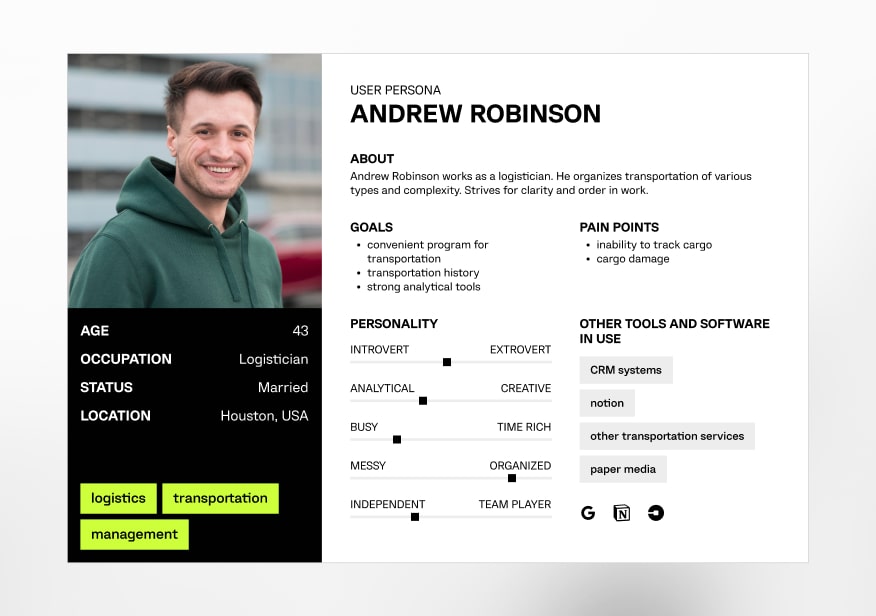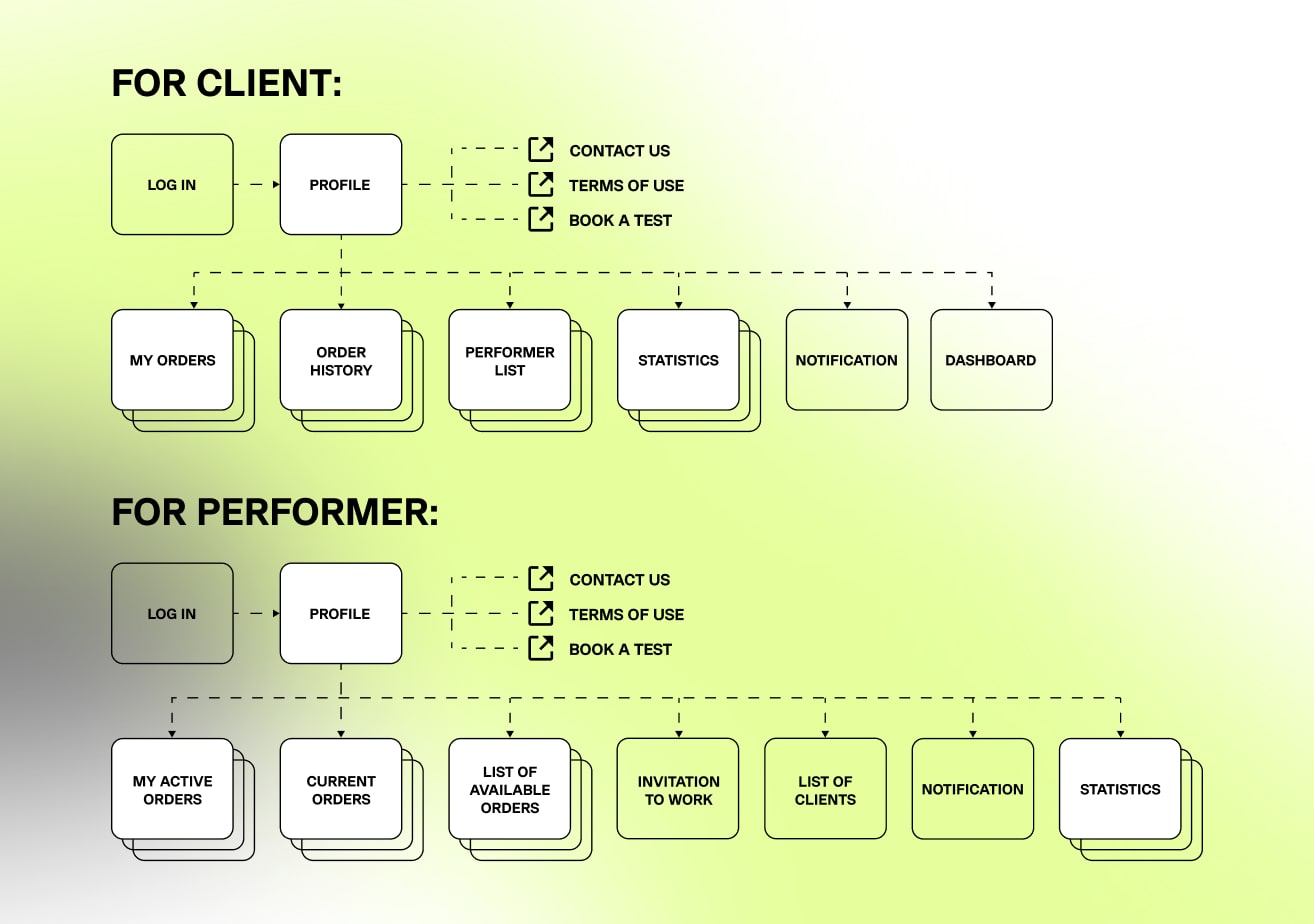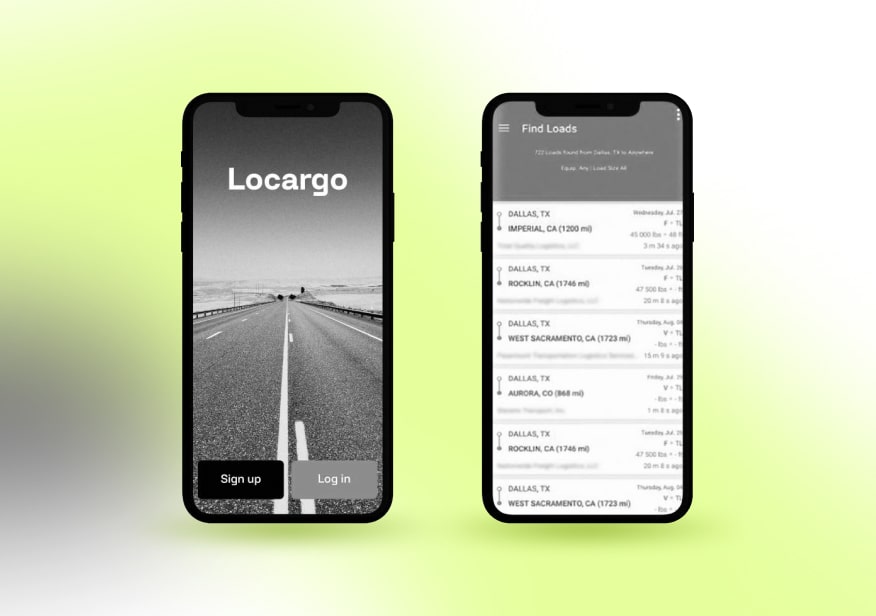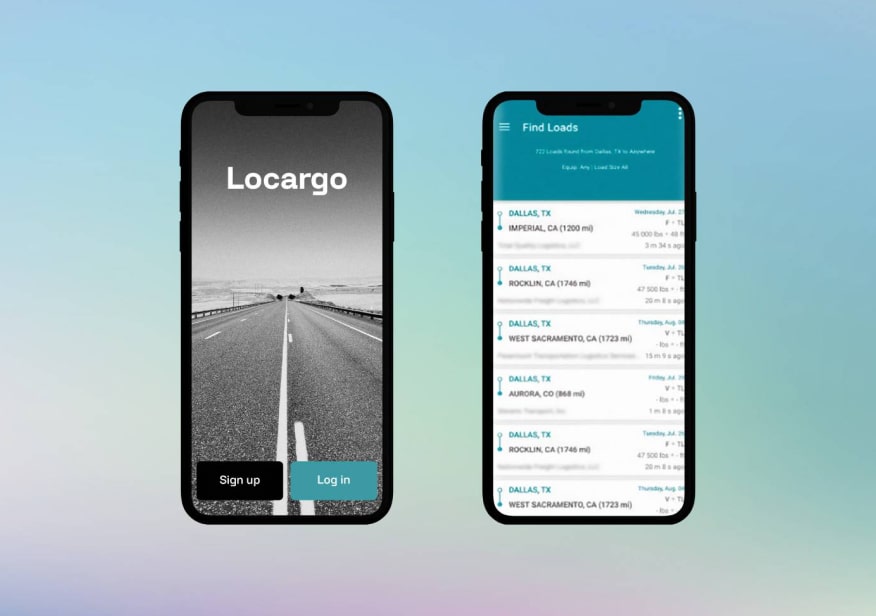Our client received a platform to manage cargo transport, administrative tasks and invoices based on the Internet of Things. Our engineers created a portal for delivery services to process orders, create enquiries. We integrated Google Maps for navigation and implemented a system to support accounting and transport operations.
LOCARGO is a Texas-based B2B trucking and delivery platform that connects service providers and drivers with local customers. Their business model is similar to Uber’s concept, involving efficiently using resources and meeting freight needs in an on-demand economy. The client is focused on the broad Texas trucking market, drawing attention through access to the Port of Houston. This strategic position gives an advantage in serving many customers and partners in the local delivery ecosystem.
The client had the task of creating a platform for optimising freight transport. With its help, our client wanted to combine and distribute shipments from different clients and create a marketplace for freelancers and small companies. However, the process of organising disparate counterparties and logistics operations turned out to be quite complicated, so we decided to implement technologies based on AI and the Internet of Things.
We provided an integrated solution that uses sensors and a distribution optimisation algorithm to plan the logistical operations across the ecosystem of participating drivers. It gave the opportunity for the operations to exploit unused capacity.
We examined the processes for placing orders, tracking shipments and monitoring delivery status. Then we analysed capacity utilisation. Our engineers created web and mobile applications based on detailed user stories. In support and enhancement mode, we incorporate user feedback into the development and improvement of the apps.
The client transformed their business from being a small cargo operator to becoming the collaboration platform that defines the ecosystem. The new system contributed to five-fold increase in the client’s revenue over two years.
Our in-depth understanding of the B2B logistics landscape and the challenges resonated with the client. We didn’t just offer a product, we built a partnership. From the initial consultation, we worked closely with LOCARGO to understand their needs and goals. Our proposed solution was about delivering a platform that would optimize their business model, increase efficiency, and drive revenue growth.
We prioritized tasks by first addressing LOCARGO’s core challenges – optimizing freight transport and creating a user-friendly marketplace platform. This initial focus demonstrated our commitment to their success.
Cargo transportation is a complex process that requires careful planning, coordination and control. This was exactly what the client’s company faced, whose cargo truck fleet was growing, and with it, the challenges. Inefficient use of resources, high fuel costs, and low driver productivity were all negatively affecting the company’s profits.
LOCARGO looked at off-the-shelf logistics management software. These solutions offered basic functionality but lacked the flexibility and scalability required for a unique market vision.
Our specialists thoroughly studied the company’s business processes and proposed a comprehensive solution based on the Internet of Things, which included:
In just a few months, the client company reduced fuel costs by 20%, increased driver productivity by 15% and increased customer satisfaction by 10%.
Within the design phase, tasks were structured to enhance UX and UI. User research and persona creation guided the development of intuitive wireframes and prototypes. Concurrently, UI design focused on crafting visually appealing interfaces with consistent branding. The ergonomic UI ensured seamless interactions.

An in-depth profile representing key stakeholders for targeted design decisions

A visual representation outlining the hierarchical structure and navigation flow

A simplified, skeletal layouts illustrating the basic structure and functionality of pages

A visually appealing and ergonomic design for seamless user interactions
JAVA + SPRING
Java is a versatile, object-oriented programming language widely used for building scalable and robust applications. When paired with the Spring framework, it provides a comprehensive and modular platform for developing enterprise-level solutions. Spring simplifies Java development, offering features such as dependency injection, aspect-oriented programming and support for various data access methods.
MONGODB
MongoDB is a NoSQL database that utilises a document-oriented model. It stores data in flexible, JSON-like documents, making it suitable for handling unstructured or semi-structured data. MongoDB's scalability, high performance and ease of use make it an excellent choice for applications requiring flexible and dynamic data storage.
REDIS
Redis is an open-source, in-memory data structure store. It is a cache, message broker and key-value database, allowing fast and efficient data retrieval. Redis is known for its simplicity, speed and support for various data structures, making it ideal for use cases where quick data access is crucial.
MYSQL
MySQL is a widely used open-source relational database management system (RDBMS). It stores and manages structured data, offering reliability, performance and ease of use. MySQL supports SQL queries, making it suitable for applications that require robust relational data storage and retrieval.
The distributed team implemented a Scrum-based approach to ensure the continuous integration of the project’s aspects and features. After the initial strategy session, tasks were planned and assigned to individual engineers through Jira. The iterative approach accelerated the development pace and allowed the client to assess the progress and regularly introduce new requirements when needed.

